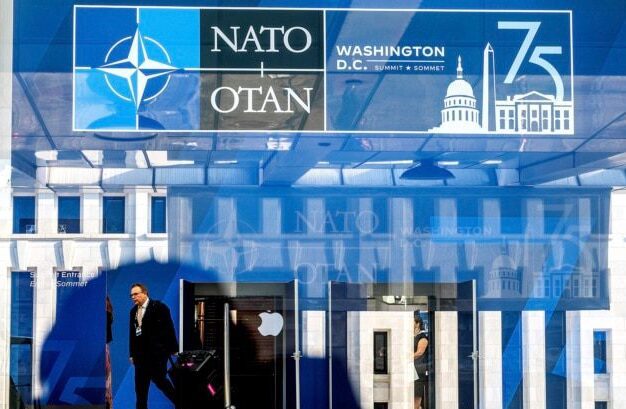Bucharest, Romania — In the quiet but resilient heart of Eastern Europe, where fields once echoed with the songs of ancestors, another sound now fills the air—the chilling hum of Russian drones trespassing where peace ought to reign. Rumania, standing tall at the edge of NATO’s eastern flank, has called for more than just watchful eyes in the sky. The message, spoken with the weight of history behind it, was clear: a “coordinated and robust” response is now a necessity, not a choice.
A Growing Concern Along NATO’s Eastern Front
In Bucharest, under the ancient skies that have borne witness to centuries of change, NATO’s defense ministers gathered. They spoke of a new, relentless threat—Russian missiles and drones, moving like uninvited guests into NATO’s airspace, causing more than just alarm. In recent weeks, both Romania and Latvia felt the weight of this incursion when Russian drones, like ghosts slipping through the cracks, crashed within their borders.
Angel Tilvar, Romania’s defense minister, did not speak lightly. His voice, as steady as the mountains that line his homeland, urged NATO to act together—stronger, faster, and with unwavering resolve. “The flanks of this alliance are bruised,” he seemed to say, “and the bruises may grow if we do not bind together.”
Tensions Rising Across the Black Sea
Like a storm brewing silently over the vast Black Sea, Russia’s shadow looms large. The water, once a mirror to the blue heavens, now reflects the somber hues of conflict. Just days ago, Ukrainian ships, humble vessels of peace and trade, found themselves under attack—Russian missiles reigning down in a calculated strike near Romania’s border.
It is here, along the Danube’s ancient flow, where Romania’s land meets Ukraine’s shores, that the stakes feel impossibly high. For months now, fragments of Russian drones, broken and battered, have rained down on Romanian soil, reminders that the lines of war are drawn too close.
The Call for Unified Defense: No Nation Left Alone
In the face of these rising tensions, the ministers of the B9—a coalition of NATO’s easternmost states—speak with one voice, one purpose. They understand, perhaps more than others, the delicate balance between peace and conflict. Poland’s deputy defense minister, Pawel Zalewski, echoed this urgency, reminding NATO of the fragile line they walk. “These drones,” he said, “are not just pieces of metal. They are warnings—warnings that must be answered.”
Poland knows all too well the weight of history, the heavy toll of unchecked aggression. From Warsaw to Bucharest, from Latvia to the Black Sea, the message is clear: this is no longer a regional problem. It is a shared burden, one that must be met with strength, precision, and unity.
A Future Clouded, But Hopeful
And yet, even as the skies darken, there is a quiet strength that refuses to be broken. Romania, with its deep history and strong people, will not bow. Neither will the other nations of NATO’s eastern frontier. They stand, as their ancestors once did, resolute in the face of uncertainty.
The ministers’ voices, rising in unison from Bucharest, speak not just for the present, but for a future that refuses to be defined by fear. They call on NATO to embrace the challenge, to reinforce its defenses, to protect the skies that shelter its people. For in this moment of trial, the strength of an alliance is not in its weapons, but in its unity.


